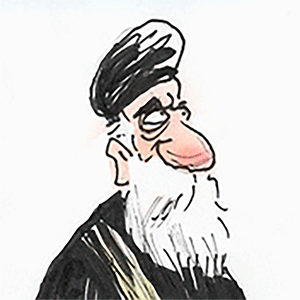Drought gripping the Northeast, NYC raises fears of autumn wildfires
Published in Science & Technology News
Waterways and wells are running dry in parts of New England and trees in New York City are already shedding their leaves as a late-summer drought engulfs the U.S. Northeast, raising the risk of wildfires.
More than 80% of the region is now abnormally dry or in drought, according to a U.S. monitoring service, compared to just 11% this time last September. Some parts of the Northeast have gone weeks without significant rains — akin to conditions less than a year ago that led to a historic outbreak of brush fires that scorched New York City and nearby areas.
In New York state, environmental officials have urged consumers to voluntarily cut back on water use as streamflow plummets and groundwater levels dry up. Elevated wildfire risk has set in across New Hampshire, Maine and Vermont, which is experiencing its first statewide drought since record-keeping began in 2000.
“This spring was pretty wet in some of these areas into early summer, which really allowed vegetation to flourish,” says Samantha Borisoff, a climatologist at the Northeast Regional Climate Center at Cornell University. But as those plants dry out — and drought stress causes trees to drop their leaves weeks early — the stock of potential fuel for fire is continuing to grow.
The drought is linked to sparse summer rains, which have been running below normal for weeks. Storms are often hit-or-miss across the Northeast in the summer months, said Jennifer Francis, a senior scientist with the Woodwell Climate Research Center in Massachusetts. Thunderstorms can cause severe downpours and localized flooding in some areas, while the next neighborhood over remains mostly dry. That variability — paired with unusually warm temperatures and a lack of moisture from tropical storms passing offshore over the Atlantic Ocean — has left some communities starved for rain.
In densely populated areas, the risk of fire is even greater. That includes New York City, which has seen only sporadic storms in the final weeks of summer.
Manhattan’s Central Park received less than half its average rainfall for August, according to the National Weather Service. Looking back further, summer rains in the park have come in 5 inches below the average seasonal total.
That’s causing increased concern leading into the fall fire season, said Kevin Woods, chief of fire operations for the New York City Fire Department. In 2024, New York experienced one of its driest autumns on record, with a record number of brush fires to match. Crews responded to 229 fires in a two-week period from late October into November, Woods said, exhausting firefighters and leaving the department’s resources stretched thin.
“These are the same units that respond to structural fires, gas leaks, emergencies — whatever it may be,” Woods said. Intense brush fires broke out deep in city parks, including Prospect Park in Brooklyn and Inwood Hill Park in upper Manhattan. “Our biggest challenge was water supply, because there are not too many hydrants in the middle of a park.”
To prepare for this fall, Woods said the department has invested in miles of lightweight forestry hose, which is easier for firefighters to haul into remote areas by hand. They’ve also stepped up training on “water relay,” or the use of additional pumps to push water over longer distances from its source.
Through the end of the year, forecasters have predicted drought will likely ease across New York City, while keeping its grip on large swaths of New England. Late fall in particular can bring drenching rains, but downpours may not be enough to break the drought. That usually requires repeated rounds of “soaking, all-day rain” falling at a moderate clip, Francis said, which is less likely to occur as the climate continues to warm.
“We’re going to see more persistent weather patterns, where it’ll be dry for a longer period or wet for a longer period,” Francis said. “Heat waves are under that umbrella, as well as drought — which is the recipe for fire.”
©2025 Bloomberg L.P. Visit bloomberg.com. Distributed by Tribune Content Agency, LLC.






Comments